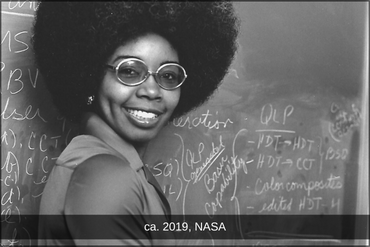Black Inventors Who Changed Society
Lonnie Johnson
Inventor of the SuperSoaker®
Johnson has an impressive resume, including work with the US Air Force and NASA, a nomination for astronaut training, over 100 patents, and more than 20 pending patents applications. However, he is best known for his fun squirt gun design.
Unlike its motorized predecessors, Johnson's squirt gun relied on air pressure and arm pumping for pressurizing the firing chamber. Originally marketed as the "Power Drencher," the toy was later renamed the SuperSoaker®. Since its first release, the Super Soaker brand has seen numerous new developments in technology, solidifying its place as a leader in water gun technology.
Valerie Thomas
Inventor of the Illusion Transmitter
From 1964 to 1995, Valerie Thomas worked for NASA in various capacities, including developing real-time computer data systems, conducting large-scale experiments, and managing multiple operations, projects, and facilities.
In 1976, Thomas learned about the potential to create 3D illusions using concave mirrors. She began experimenting on an illusion transmitter in 1977 and patented it in 1980. NASA still uses the illusion transmitter to this day.
Garrett Morgan
Inventor of the Gas Mask and Improved Traffic Signal
One of America’s most successful black inventors, Garret Morgan created the gas mask and the improved traffic signal. In 1916, Morgan’s gas mask, patented in 1914, garnered interest following its utilization in the successful rescue of a group of workers stuck in a tunnel after a nearby explosion.
In 1923, after witnessing an accident at a notably dangerous intersection, Garrett Morgan designed an improved traffic signal. His improvement utilized a warning light to alert drivers they would soon need to stop. The same year, he sold the rights to General Electric - Morgan’s invention soon became the standard across the country.
Dr. Betty Harris
Inventor of the Spot Test for Identifying Explosives in a Field
Interested in chemistry from a young age, Dr. Betty Harris pursued her Bachelor and Masters of Science degrees in Chemistry. After teaching for several years, she became a visiting scientist at Los Alamos National Laboratory. While at Los Alamos, Dr. Harris' study of explosives and the cleanup of hazardous waste led her to pursue a Ph.D. in Chemistry, consequentially transitioning her role to a research chemist at Los Alamos.
In addition to her role as a research chemist, focused on hazardous waste treatment and environmental restoration facilities, Dr. Harris held management positions at Los Alamos and established a summer programe for high school students to recruit more women and people of color to become scientists. In 1986, she patented a spot test for identifying particular explosives in a field environment.
Otis Boykin
Inventor of the Wire Type Precision Resistor
Although he dropped out of graduate school, Boykin applied his interest in electronics to working on his own inventions. In 1959, he earned his first patent for a wire precision resistor that could designate a precise amount of resistance. Then, in 1961, Boykin was granted a patent for his electrical resistor that could withstand extreme conditions.
Boykin’s resistors contributed to the creation of products that are still used today, such as guided missiles, computers, and the pacemaker. Boykin continued to work on and improve resistors until his death in 1982.
Dr. Charles Drew
Inventor of the "Blood Bank"
While pursuing his doctorate at Columbia University in 1938, Dr. Drew was assigned to help set up an experimental blood bank project. Research on preservation, temperature, fluid balance and replacement, diagnosing and controlling shock, blood chemistry, transfusion, anticoagulants, storage containers, and shelf life followed.
Eventually, Dr. Charles Drew became the first black person to earn a doctorate from Columbia. In 1942, he received a patent for a method of separating and storing plasma. At the onset of WWII, Dr. Drew was a driving force for "bloodmobiles" and the American Red Cross blood bank. He was also appointed head of the Blood for Britain Project, a project devoted to transporting blood and plasma to Great Britain during the war.
.png)

.png)
.png)
.png)
.png)
